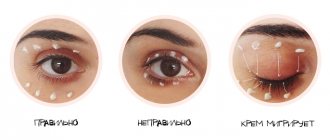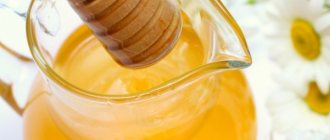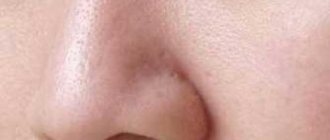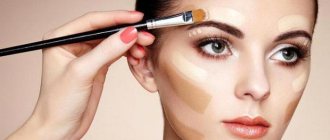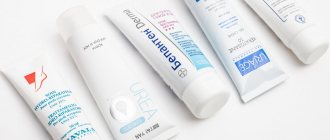The choice of oil for oily facial skin is based on the type of skin and its reaction to the effects of the ester. These components are available and natural, so they actually have no restrictions or contraindications. Although you need to be careful when using them so as not to increase the number of blackheads and acne on the skin. Masks are prepared based on essential and basic ingredients, added to creams, and used as tonics.
The best base oils for face
In modern cosmetology, there is a huge variety of oils for oily skin, but the fair sex mainly prefer simple base oils made by nature itself. The most popular are:
Hazelnut oil
An excellent assistant for facial care. Contains a large amount of beneficial oleic acid, smoothes and restores the skin, removes oily shine, and is perfectly absorbed. An excellent “fighter” against deep acne. The product can be easily used by those with fragile and damaged skin.
Oil made from grape seeds
Another delicious product containing linoleic fatty acid, which can penetrate into the deepest layers of the skin and restore biological components. Produces an anti-inflammatory, even disinfectant effect.
This oil also gives the skin a matte appearance, a healthy tint to the face, tightens pores, is easily absorbed into the skin, and does not leave an oily sheen. As a result of using this product, the skin becomes more elastic and fresh.
But do not forget about other base oils, which are also not without beneficial properties, namely:
Editor's Choice: How to get rid of oily shine on your face
Sesame oil
Sesame oil can reduce irritation, tighten pores, and restore proper sebum secretion.
Almond oil
Almond oil can cleanse pores and relieve redness.
Apricot kernel oil
Apricot kernel oil softens the skin, gives it moisture and elasticity.
Jojoba oil
During the hot season, jojoba protects the skin from ultraviolet solar radiation, moisturizes and nourishes it, and helps with redness.
Application
A variety of oils for oily skin are used in both care and makeup. If the skin is inflamed but peeling, then you can add a couple of drops of any base oil mixed with tea tree oil to the foundation. This “cocktail” will calm your face and at the same time remove excess epidermis, since problem skin especially needs proper care and makeup.
To cleanse skin with enlarged pores, it is better to use hydrophiles with extracts of lemon, green tea, mint or tea tree. It is worth adding products with salicylic acid and rosemary to your care.
Combination skin with oily areas is suitable for a mixture of oils that both moisturizes and does not cause excess shine. These are, for example, tea tree and almond base, rosemary and apricot, sesame. At the same time, washing should be gentle, but it is better to choose “harder” masks for the T-zone, for example, with a warming effect, clay ones.
The best essential oils for the face
Essential oils also play a big role in the world of medicinal products. Their undoubted advantages include: the ability to rejuvenate the skin, heal microcracks and microwounds, regulate the correct ratio of hormones in the body, narrow and cleanse pores.
But there are also disadvantages, and the main one is that essential oils are in most cases produced by cosmetic companies, and the level of naturalness in them is much lower than in base oils.
But the final choice always remains with the woman, so we will still consider in detail the healing properties of the best essential oils:
- Juniper oil tones oily skin and eliminates dull and tired appearance.
- Bergamot oil helps with skin allergic rashes and irritations, cleanses and tightens pores, and monitors the functioning of the sebaceous glands.
- Cedar oil also eliminates rashes and acts as a soothing agent, improves skin elasticity and rejuvenates it.
Editor's choice: Starch face mask: effect and best home recipes
- Grapefruit oil can normalize damaged sebaceous glands and drainage functions, gives the skin a brightened appearance, and whitens it. And, of course, it has a beneficial effect on pores.
- Lavender oil is generally used in its pure form due to its lack of fat content, and it is perhaps one of the safest essential oils. This product perfectly mattifies oily skin, does not leave behind a sticky film, is immediately absorbed, so it can be applied even under a layer of base makeup. It has only positive effects on the skin: it helps with redness, peeling, itching, allergies, and gets rid of acne.
Recipes
Lemon essential oil
You can prepare it at home. They do it like this.
- Grate enough lemon zest to fill half the selected bottle.
- Add olive oil to the bottle with zest.
- Leave the dishes on the windowsill on the sunny side for 2&minus.3 weeks, shaking the container daily.
- The liquid is filtered and the zest is squeezed out.
Lotion
For 100 ml of distilled water take:
- ethyl alcohol (96%) &mdash, 15 ml,
- essential oils of chamomile, geranium, lemon, 3 drops each.
The liquids are mixed, poured into a dark glass bottle, and stored in the refrigerator.
Mask №,&thinsp,1
This recipe will help get rid of inflammation on the skin, acne and pimples. The following components are used:
- raw white of one egg,
- almond oil &mdash, 10 ml,
- St. John's wort tincture (40%) &mdash, 15 ml.
Beat the egg whites and add the rest of the ingredients. The mixture is applied to the face, left for 15 minutes, and washed with cool water.
Mask №,&thinsp,2
Take half a tablespoon of cosmetic clay, white, green or black, and dilute it with clean water to form a paste. Here you can see which clay is suitable for oily skin.
Add 3 ml of black cumin oil to the pulp, stir, and apply to the skin. After 15 minutes, wash with cool water.
Safety precautions and disadvantages of essential oils for the face
No matter how wonderful properties essential oils have, they must be used with caution and care. In pursuit of the maximum effect, there is a huge risk of getting burns.
Also, under no circumstances should this product be applied to the skin undiluted; the oil must be diluted in a carrier. It can be base oil, honey, milk, salt, etc. (these components are selected separately, depending on the desired result).
Separately, I would like to highlight bergamot oil, one of the most unsafe, since under the influence of sunlight it can leave serious burns on the skin. Therefore, while using this product, it is necessary to limit exposure to ultraviolet radiation, and go outside only a few hours after use.
Editor's choice: Fashionable eyebrows 2020: photos of the best looks, new trends of the season
In addition, unfortunately, essential oils can cause a very severe allergic reaction, and to avoid unwanted effects, you should undergo an allergy test before use.
Comedogenicity: what is it and what oils cause it?
Before you start using oils, you need to know what comedogenicity is and exactly how products cause it.
1) What is comedogenicity?
I'll start with history. One of my friends was offered a free beauty treatment with some new Chinese cosmetics.
I tried to dissuade him, but in vain. “Free” was the deciding factor. She was delighted with the procedure itself and told me how velvety the skin had become.
But the next day I called and complained: inflammation and whiteheads appeared on my face.
It turned out that the cosmetics used for care were comedogenic.
What is comedogenicity? This is the unfortunate ability of some cosmetics to clog pores, cause the appearance of white and blackheads, and provoke inflammatory processes.
This is what skin looks like if you use comedogenic cosmetics
First of all, the comedogenicity of cosmetics manifests itself in people with oily and problematic skin. Their skin is already prone to acne and inflammation, and incorrectly selected cosmetics can further aggravate this problem.
2) Shea butter, rosehip, jojoba and other vegetable oils in cosmetic care
Facial oils as home care products have regained popularity relatively recently.
Ancient beauties only used them, because the beauty industry was at a low level. In the twentieth century, when the abundance of home care products made our eyes wide open, most ladies did not see the point in anointing their skin with oil.
But in the 21st century, more and more women are purchasing shea butter, shea butter, rose hips, sea buckthorn, etc. in the pharmacy in order to have beautiful skin.
Why you should use oils when caring for your face:
- Nutrition. The abundance of useful components is because the skin is deeply saturated with vitamins that can only be dissolved in fats. And since there is no water in oils, the nutrients are not destroyed by oxygen.
- Hydration. If you have dry, dehydrated skin, then saving it with oil is much easier than using even the most expensive cream. Vegetable oil will quickly restore the water-lipid balance of the dermis, making it soft and smooth.
- Protection. The oil forms a protective film on the surface of the skin, through which moisture does not evaporate, which means the skin remains moisturized and silky longer.
At the same time, the use of oils in cosmetology has not only advantages, but also disadvantages.
| Benefits of using oils | Disadvantages of the solution |
| Well moisturize and nourish the skin. | Not suitable for all skin types. |
| They are very inexpensive compared to professional products. | They have the property of being comedogenic. |
| Easy to use. | They weigh down the skin, so they cannot be used constantly. |
So, it is better to weigh the pros and cons before using this or that oil, and even better, consult a cosmetologist.
3) How does oil cause comedogenicity?
Most often, comedogenicity is caused by products containing harmful components, such as surfactants and oils.
“But why oils,” you ask, “they are a 100% organic product?” Because not all oils are beneficial for skin, especially oily skin.
It all depends on the composition of the oil itself. The most comedogenic oils are those containing oleic, arachidic, lauric, stearic and similar acids. Therefore, when choosing oils to use, understand what acids it consists of.
What happens if you ignore this property, the comedogenicity of olive oil, for example? There will be damaged skin, which will have to be treated long and expensively by a dermatologist and cosmetologist.
Just look at these two photos.
| BEFORE | AFTER |
| This photo shows a girl who took proper care of her skin, using products selected for her by a cosmetologist. The result is clear, beautiful skin. | Here she is, but after, on the advice of her friends, she decided to experiment with oils. Acne and inflammation have formed on the skin. |
At the same time, you don’t need to think that all oils are horror and a nightmare. They can and should be used, simply - competently, having figured out which are comedogenic and which are not.
Important: the comedogenicity of cosmetics, including oils, is a rather subjective concept, which largely depends on the individual characteristics of the skin. That is, the same oil can work differently in two people with oily skin: it can provoke comedones in some, and not in others. So you can’t do without testing drugs.
Contraindications to the use of any oils (both base and essential)
To avoid unpleasant consequences, sometimes even very dangerous to health, you must strictly follow the rules below and coordinate any deviation from them with a cosmetologist:
- Do not use oils during pregnancy and breastfeeding;
- Do not apply to open wounds or rashes of unknown origin;
- Try not to use mixtures in hot weather or severe frost;
- Do not use oils before going outside; the interval should be at least 2 hours.
- It is not recommended to use expired oils and buy them from little-known stores. Try to give preference to products made by popular brands.
How to choose the right oil for skin care
When choosing oils for face and body care, you should consider the following factors:
- Skin type – dry, oily, normal, combination. For those with the former, those with low and moderate comedogenicity will be suitable; if there is excess sebum, only non-comedogenic cosmetic products will be suitable. It is forbidden to use natural oils for facial care on a regular basis. They can dissolve the secretion of the sebaceous glands: this makes the skin dry. It is allowed to treat feet, heels, and elbows.
- A history of allergies to products, including food intolerances to the products from which the oils were made. Before use, perform allergy tests for comedogenicity. Apply the substance to your wrist or near your elbow. Observe the body's reaction to the new component. If itching, hyperemia, burning, or rashes appear, then you should stop using the oil.
- Product quality. The best manufacturer, according to user reviews, in this niche is the company iHerb.
When purchasing natural oils, you need to pay attention to their shine, color, and the presence of sediment. Many of the cosmetic substances are refined and have virtually no odor.
Tongue test - if you know exactly what it should taste like. Extracts from celandine are poisonous; do not use this method to check the quality of the product.
Do not use whole cosmetic oils. They are added to masks and creams; they are not applied in a thick layer to the skin and are not used every day. Castor oil is low comedogenic, but it is used a couple of times a week.
Oily cosmetics should be used on the recommendation of a dermatologist or cosmetologist, who will take into account the skin type, the comedogenicity of the substance, and select the correct facial care.
MORE ABOUT: Thrush in the mouth of a baby


